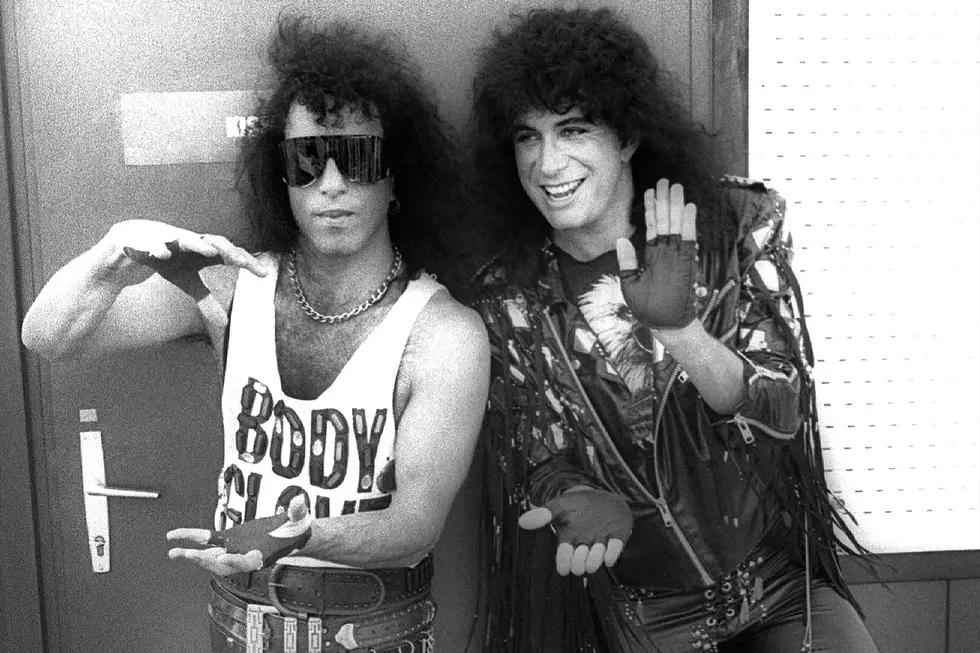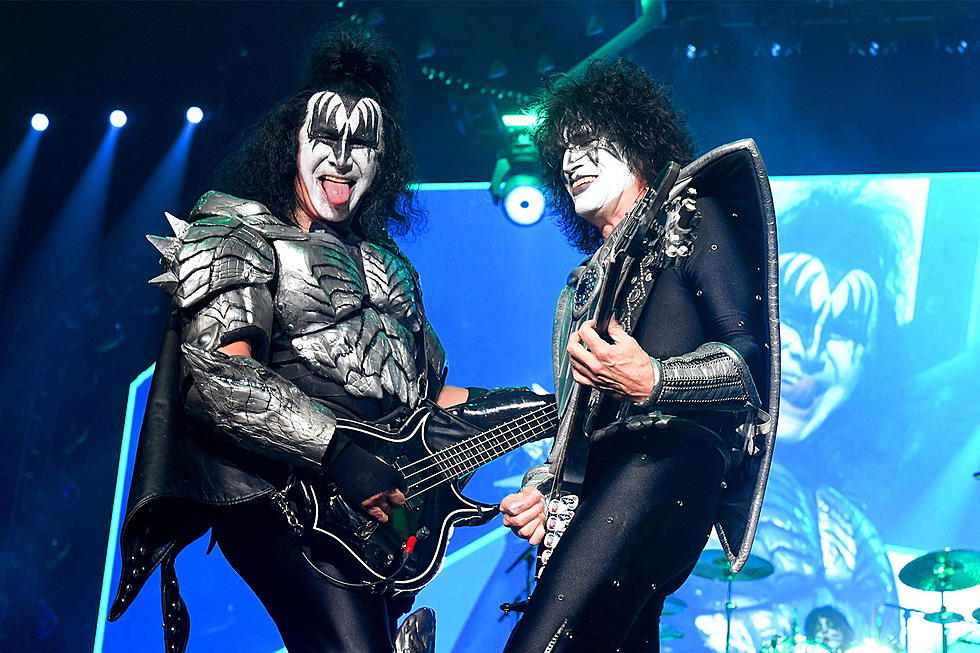
35 Years Ago: Kiss Tries to Be Everyone Else on ‘Crazy Crazy Nights’
Kiss’ original masks may have been long gone, but their Aug. 18, 1987, single “Crazy Crazy Nights” seemed to suggest the band was trying on a new one.
Written by Paul Stanley with assistance from co-writer Adam Mitchell, this song was a clear attempt to emulate the success of newer rock heroes Bon Jovi and their ilk – groups that Kiss had in some cases influenced. The result was a slightly undignified feedback loop.
Not to say “Crazy Crazy Nights” was a bad pop-rock song. It was just an any-band-of-the-time song, and that wasn’t what Kiss fans expected. It all sounded clean, clear and poppy, but it didn’t sound like Kiss.
Yet Stanley and fellow Kiss mastermind Gene Simmons charged gamely ahead.
“‘Crazy Crazy Nights’ is basically just an extension of what we’ve been doing all along, which is preaching – yes, folks, we preach, but we preach about having a good time,” Stanley said in a backstage interview at the time. The spirit of the track, he added, was about escaping from the workaday prison by partying all night: “If you hate yourself in the morning, sleep late.”
Their change in musical direction was subsequently blamed on Simmons’ growing interest in a fledgling acting career while recording commenced on the single's parent album, Crazy Nights. New producer Ron Nevison stepped into the creative void, having already moved Ozzy Osbourne and Heart toward more contemporary sounds – and big chart successes.
“Paul, to my recollection, wanted to make a different kind of album,” Nevison told KissFaq (as seen on KissConcertHistory) in 2012. “You know, with the success that Bon Jovi was having in writing with Desmond Child and other bands – I had taken Ozzy down that road with his first hit single in years, if ever, ‘Shot in the Dark,’ in 1986. And, of course, Heart.”
Simmons referenced some “false starts” as sessions stretched into two years. Nevison confirmed that Simmons arrived with 20 songs, but wasn’t active in what followed.
Watch Kiss’ Video for ‘Crazy Crazy Nights’
Meanwhile, Stanley was closely following Bon Jovi’s success with songs like “Livin’ on a Prayer,” which was great news for Nevison. “I wanted to get Kiss that same level of – you know, instead of selling 500,000 to 700,000 records, which is respectable, especially these days – I wanted it to be bigger than that,” he added. In keeping, Nevison was perfectly content with Stanley’s new tendency toward synth-based ideas. “You know, Gene’s stuff was Gene’s stuff,” he said. “Gene wrote rock stuff … not commercial really, but Kiss fans love Gene’s songs.”
Stanley’s transformation was completed with a notable shift in his singing style. “I actually wasn’t that happy with all the keys that Paul chose,” Nevison admitted. “He wanted to sing it as high as he could sing it – especially ‘Crazy Crazy Nights,’ with the modulation. He got up there, and there was no Auto-Tune. He wanted it like that and the songs were written like that and demoed like that. That’s the way he wanted to do it. I went along with it, and as far as performance goes, he did a great job.”
A standard-issue ’80s video for a standard-issue ’80s song like “Crazy Crazy Nights” was, of course, commissioned. Kiss assembled for a stadium-themed shoot in Los Angeles after 7,000 fans were recruited via radio station KNAC.
“Most bands are always going around saying, ‘Our fans are the greatest,’” Stanley enthused in the backstage interview, “but listen, there’s no other band I know of that can go on the radio and say, ‘We’re doing a video, we want you there’ and lo and behold, two days later you got a packed arena.”
Stanley, Simmons, guitarist Bruce Kulick and drummer Eric Carr performed older Kiss favorites for fans between takes at the Olympic Auditorium. Everyone who attended left with a limited-edition shirt reading: “I went crazy with Kiss.”
None of it helped “Crazy Crazy Nights” at American record shops, as the single stalled at No. 65 on the Billboard Hot 100. Still, it became their biggest hit in the U.K. and parts of Europe. “We see a lot of good times ahead,” Simmons said just before the launch of “Crazy Crazy Nights.”
By the time they released their next album, 1989's fitfully successful return to guitar rock Hot in the Shade, Kiss had changed their minds. They hired a new manager in Larry Mazer on the premise of bringing back Simmons’ rock values, then began incorporating more classic-era songs on stage.
Next, they'd record 1992’s Revenge, a well-regarded comeback album that finally placed this crazy, crazy period in the rear-view mirror.
20 B-Sides That Became Big Hits
Ranking Every Kiss Album




